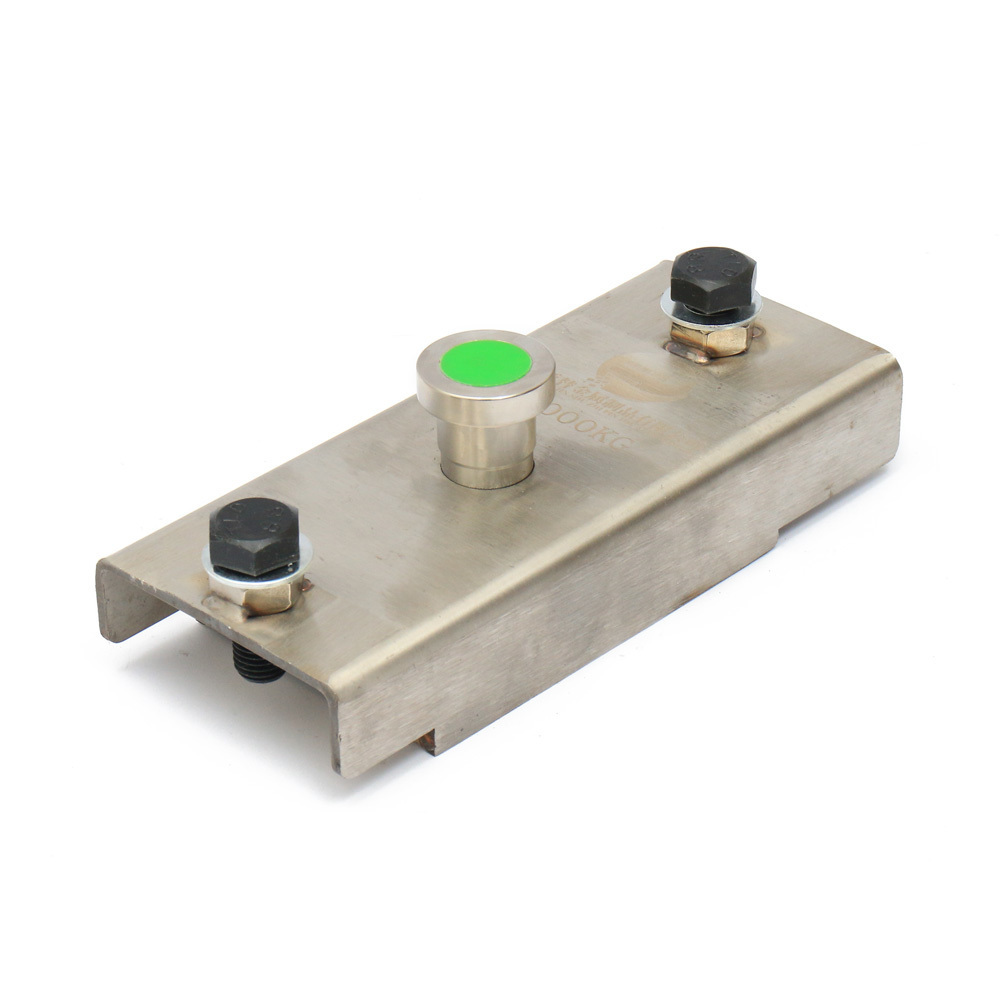Design Innovations: How Precast Magnets Revolutionize Electrical Product Development
Design Innovations: How Precast Magnets Revolutionize Electrical Product Development Table of Contents 1. Introduction to Precast Magnets 2. What Are Precast Magnets? 3. The Importance of Precast Magnets in Electrical Engineering 4. Design Innovations in Precast Magnets 5. Applications of Precast Magnets in Electrical Products 6. Benefits of Using Precast Magnets 7. Fu
Design Innovations: How Precast Magnets Revolutionize Electrical Product Development
Table of Contents
- 1. Introduction to Precast Magnets
- 2. What Are Precast Magnets?
- 3. The Importance of Precast Magnets in Electrical Engineering
- 4. Design Innovations in Precast Magnets
- 5. Applications of Precast Magnets in Electrical Products
- 6. Benefits of Using Precast Magnets
- 7. Future Trends in Precast Magnet Technology
- 8. Challenges and Considerations in Precast Magnet Adoption
- 9. Conclusion
- 10. FAQs
1. Introduction to Precast Magnets
In the electrical product development landscape, **innovation** is a driving force that shapes the industry. Among the various materials that have emerged, **precast magnets** have carved out a significant niche. These magnets are not just components; they symbolize a leap towards **efficiency**, **sustainability**, and **performance enhancement** in electrical engineering. This article examines how precast magnets are revolutionizing product development and why they are becoming an essential element in the design of electrical products.
2. What Are Precast Magnets?
Precast magnets are **permanent magnets** that are manufactured in a controlled environment through advanced techniques. Unlike traditional magnets, which often rely on a labor-intensive, time-consuming process, precast magnets are created using **molded techniques** that allow for precise control over their size, shape, and magnetic properties. This innovation enables manufacturers to tailor magnets to specific applications, enhancing their functionality across various electrical products.
2.1 Types of Precast Magnets
There are several types of precast magnets, including:
- **Ceramic Magnets**: Known for their cost-effectiveness and resistance to demagnetization, ceramic magnets are widely used in applications that require moderate strength.
- **Neodymium Magnets**: Offering high magnetic strength, neodymium magnets are ideal for applications where space is limited, requiring powerful performance in compact designs.
- **Samarium Cobalt Magnets**: These offer excellent thermal stability and resistance to corrosion but at a higher cost, making them suitable for specialized applications.
Each type brings unique properties that can be leveraged in electrical product development.
3. The Importance of Precast Magnets in Electrical Engineering
The role of precast magnets in electrical engineering cannot be overstated. They contribute significantly to **energy efficiency**, **miniaturization**, and **performance**. By integrating these magnets into design processes, engineers can create products that not only meet but exceed current industry standards.
3.1 Enhancing Energy Efficiency
Precast magnets enhance energy efficiency by reducing the overall size and weight of electrical products. This reduction leads to lower material costs, decreased energy consumption during operation, and a smaller environmental footprint.
3.2 Promoting Miniaturization of Devices
As consumer electronics trend towards smaller, more compact designs, precast magnets play a critical role in allowing manufacturers to create more efficient products without sacrificing performance. This is particularly crucial in sectors such as **mobile technology** and **wearable devices**.
4. Design Innovations in Precast Magnets
Recent advancements in precast magnet technology have led to several design innovations that are reshaping electrical product development. These include improved manufacturing techniques, advanced simulation models, and integration with smart technologies.
4.1 Advanced Manufacturing Techniques
Innovations in manufacturing, such as **3D printing** and **automated molding**, allow for more complex designs and quicker production times. This efficiency enables rapid prototyping and iterative testing, accelerating the product development cycle.
4.2 Integration with Smart Technologies
The rise of the Internet of Things (IoT) has prompted the integration of smart technologies with precast magnets. These magnets can be embedded in devices that communicate wirelessly, allowing for **remote management** and **data collection**, further enhancing the functionality of electrical products.
5. Applications of Precast Magnets in Electrical Products
Precast magnets find applications in a wide variety of electrical products, from consumer electronics to industrial machinery. Understanding these applications can shed light on their versatility and importance.
5.1 Consumer Electronics
In consumer electronics, precast magnets are used in speakers, headphones, and motors, enhancing sound quality and performance while minimizing size. They contribute to innovative designs that focus on user experience.
5.2 Automotive Industry
In the automotive sector, precast magnets are utilized in electric motors, sensors, and actuators, improving efficiency and reliability while supporting the transition to electric vehicles.
5.3 Robotics
Precast magnets are vital in robotics, providing the necessary force and precision for movement and task execution. Their compact size and strength make them ideal for robotic applications that require high performance in constrained spaces.
6. Benefits of Using Precast Magnets
The benefits of integrating precast magnets into electrical product development are manifold, impacting performance, cost efficiency, and sustainability.
6.1 Cost-Effectiveness
Producing precast magnets can be more cost-effective than traditional methods, allowing manufacturers to reduce production costs while maintaining product quality.
6.2 Improved Performance
Precast magnets offer superior magnetic properties tailored to specific applications, enhancing the overall performance of electrical products.
6.3 Environmental Sustainability
As industries strive for sustainability, precast magnets contribute by reducing material waste and energy consumption during both production and operation, supporting greener manufacturing practices.
7. Future Trends in Precast Magnet Technology
Looking ahead, several trends are expected to shape the future of precast magnet technology in electrical product development.
7.1 Enhanced Customization
The demand for customizable solutions will push the boundaries of precast magnet design, allowing engineers to create components tailored to specific product requirements.
7.2 Integration with Renewable Energy Sources
As the world shifts towards renewable energy, precast magnets will likely find new applications in energy generation and storage solutions, such as wind turbines and solar panels.
8. Challenges and Considerations in Precast Magnet Adoption
Despite their advantages, the adoption of precast magnets is not without challenges. Understanding these can help businesses navigate potential pitfalls.
8.1 Material Limitations
While precast magnets offer many benefits, the materials used must withstand various environmental conditions, which can limit their applications in specific scenarios.
8.2 Cost Implications
Initial costs for advanced manufacturing techniques may be higher. Businesses must weigh these costs against long-term savings and performance benefits.
9. Conclusion
Precast magnets represent a significant innovation in electrical product development, enhancing efficiency, functionality, and sustainability. As the industry continues to evolve, the integration of precast magnets will likely play a pivotal role in shaping the future of electrical engineering. With their ability to meet the demands of modern applications, these magnets not only improve performance but also contribute to a more sustainable future. Embracing the opportunities presented by precast magnets can lead to groundbreaking advancements in the electrical sector, ultimately benefiting both manufacturers and consumers alike.
10. FAQs
What are precast magnets made from?
Precast magnets can be made from various materials, including ceramic, neodymium, and samarium cobalt, each offering different magnetic properties suitable for specific applications.
How do precast magnets enhance energy efficiency?
Precast magnets reduce the size and weight of electrical products, leading to lower material costs and decreased energy consumption during operation.
Can precast magnets be customized?
Yes, precast magnets can be tailored to fit specific design requirements, allowing for enhanced performance and versatility in various applications.
What industries benefit from precast magnets?
Industries such as consumer electronics, automotive, and robotics benefit significantly from the integration of precast magnets in their products.
Are there any challenges in using precast magnets?
Challenges include material limitations and initial cost implications, which businesses must consider when adopting precast magnet technology.
MORE
08 Aug,2025
Design Innovations: How Precast Magnets Revolutionize Electrical Product Development
Design Innovations: How Precast Magnets Revolutionize Electrical Product Development
Table of Contents
1. Introduction to Precast Magnets
2. What Are Precast Magnets?
3. The Importance of Precast Magnets in Electrical Engineering
4. Design Innovations in Precast Magnets
5. Applications of Precast Magnets in Electrical Products
6. Benefits of Using Precast Magnets
7. Fu
DETAILS
07 Aug,2025
Exploring the Benefits of Formwork Magnets for Precast Concrete Solutions
In the realm of precast concrete production, the choice of formwork systems is crucial for achieving high-quality results and operational efficiency. Formwork magnets have emerged as a vital component in this industry, providing a robust solution for securing formwork in place during the pouring and curing processes. These magnets offer numerous advantages, making them a preferred choice for many
DETAILS


